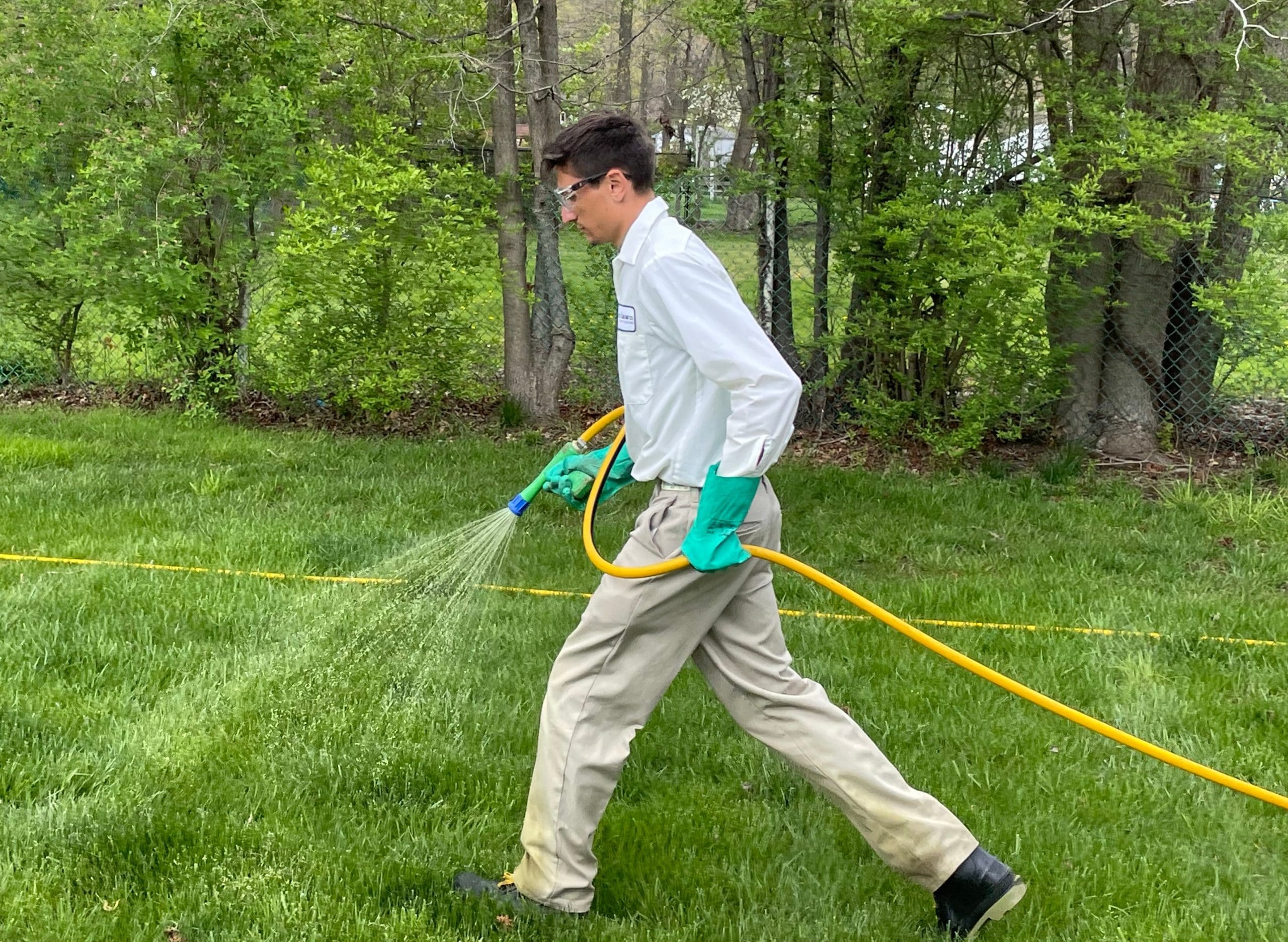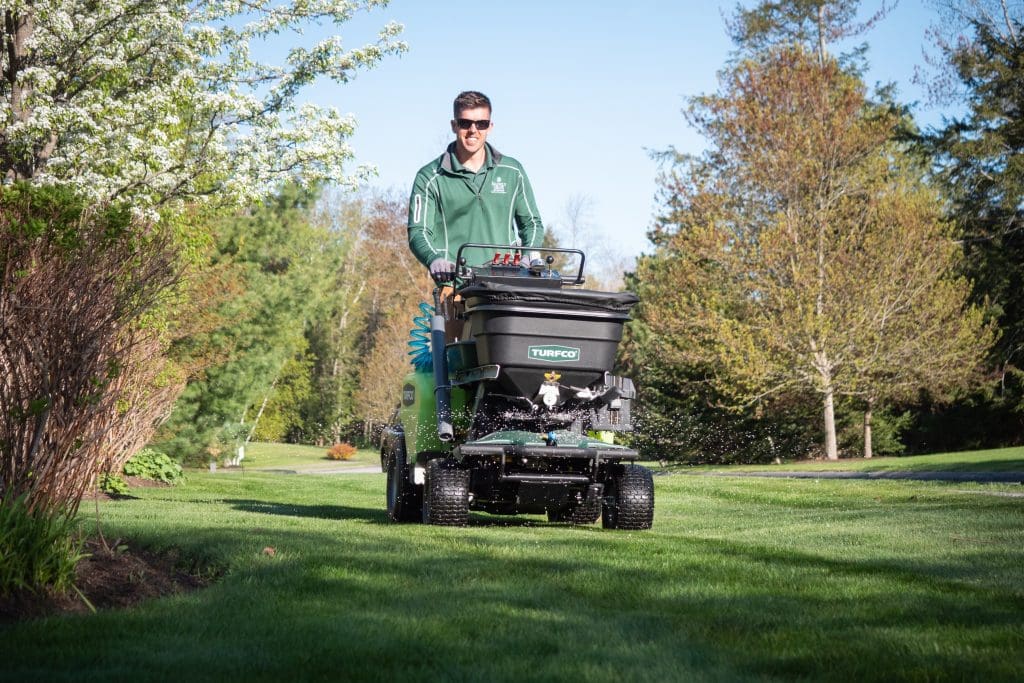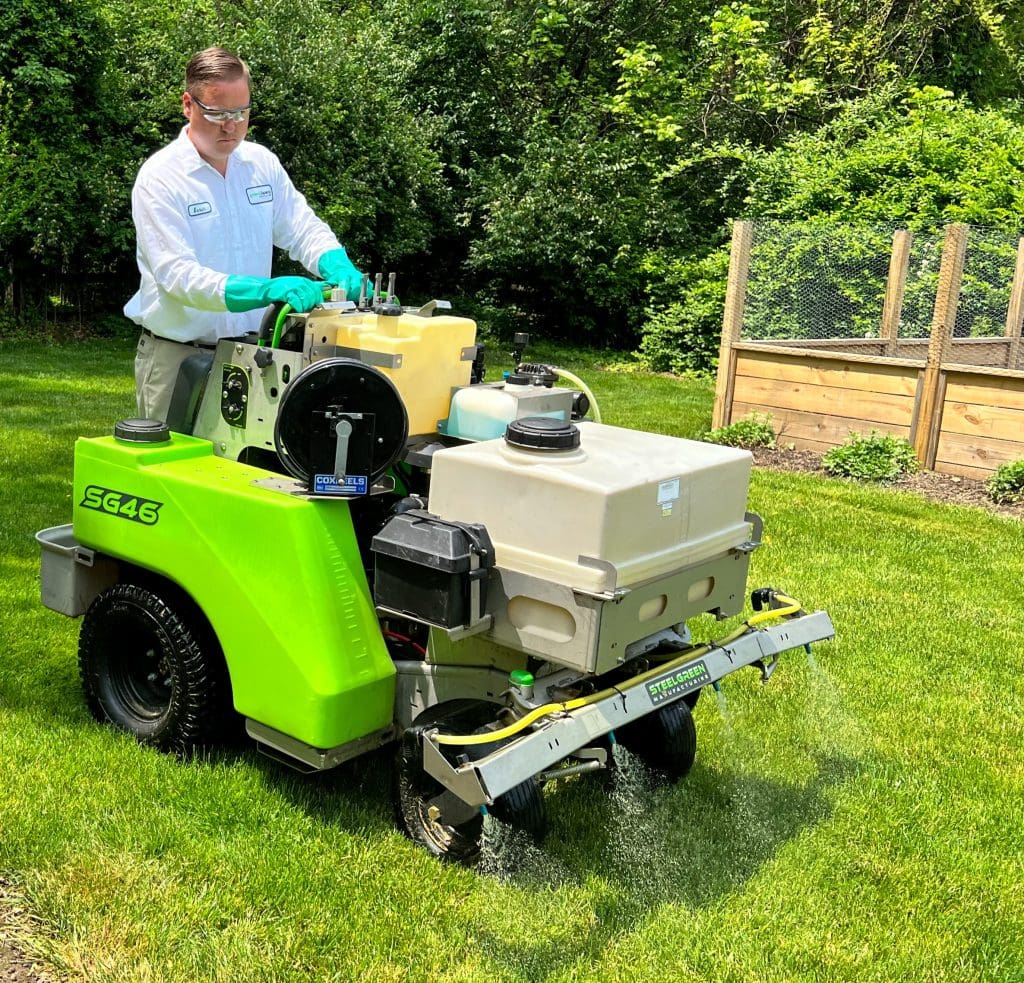
Pre-emergent herbicides are a useful tool that allows you to proactively set your clients’ lawns up for success.
“The saying ‘an ounce of prevention is worth a pound of cure’ I think applies nicely to pre-emergents in a lawn care setting,” says Palmer Higgins, president of Mainely Grass, based in Portland, Maine. “We are taking care of a living thing in lawn care. Ensuring the turf is healthy and limiting stressors helps guard against the need to intervene ‘curatively’ later on.”
Tim Sibicky, technical research and training manager for Green Lawn Fertilizing, based in West Chester, Pennsylvania, says pre-emergents are the foundation of their lawn care program. Keeping weed pressures down early in the season allows turfgrass to have less weed competition throughout the season and develop a denser lawn that’s more resilient to weed pressure later in the year.
Because pre-emergents are so critical, both Mainely Grass and Green Lawn Fertilizing have these applications as part of their lawn care programs rather than a service sold separately.
Setting Realistic Expectations
Sibicky says one of the main reasons customers sign up for their services is to address their weeds. While Green Lawn Fertilizing’s program is designed to meet and exceed those needs, Sibicky says it’s important to set reasonable expectations with new customers. Pre-emergent herbicides do have their limitations, and post-emergent applications are still needed at the end of the day.

“The pre-emergent really is just part of the equation,” Sibicky says. “The product does break down naturally over time. It’s not going to last forever, and residual activity that the product has will help reduce weed pressures in between our applications. At the end of the day, there’s still going to be weed pressures that arise, and we will address those as they come up.”
Palmer says it can be a challenge making sure customers understand pre-emergent applications do not mean they will have no weeds for the rest of the year.
“We never claim that anything we do is 100 percent effective and try to set that expectation upfront,” Higgins says. “We are also clear in our after-service reports that pre-emergents are really creating ‘barriers’ to weed germination – barriers that will degrade over time. Finally, we offer free service calls, so if weeds are an issue, we will be back out there ASAP to take care of them for free.”
Timing
For pre-emergent herbicides to be effective, timing is critical. It needs to be applied before weed seed germination and incorporated into the soil through rainfall or irrigation.
“It does not actually stop germination, which is a common misnomer many believe, but rather really inhibits early weed growth, which prevents weed seedlings from establishing,” Sibicky says.
Because the start of spring can be unpredictable, Sibicky says they track environmental conditions using methods that include plant phenology with indicator plants, growing degree days and soil temperatures.
“We know that once we get to that point of soil temperature consistently being in the range of 55 to 60 degrees, that’s when we start to see our crabgrass germination,” Sibicky says.

Higgins says they use an array of products depending on spring conditions as they monitor property conditions and growing degree days.
Green Lawn Fertilizing will utilize sequential applications to ensure they’re getting good coverage and extend their weed control.
“This allows us to stay on schedule and keep efficacy and quality high,” Higgins says. “Luckily, product technology – especially for pre-emergents – gives us some wiggle room on timing too.”
When it comes to ensuring both new and existing customers are serviced within this window, Higgins says they structure their programs so they are hitting appropriate application windows regardless of the tenure of their clients. They make sure they don’t extend themselves beyond what they can perform with quality.
“We are also able to tweak our programs to allow for new customers to come on board with us mid-year, while still getting their lawns caught up from potentially missing early-season applications,” Higgins says.
Granular or Liquid Applications
Both Green Lawn Fertilizing and Mainely Grass opt to use both types of formulations depending on the situation. Sibicky says they use granular applications earlier in the season when temperatures are cooler, and then switch to liquid applications as conditions warm and broadleaf weeds become active.
“There are advantages to either depending on the timing, the method of application, the equipment you are using, and other factors, but I don’t think there is a right answer,” Higgins says. “The application quality, selecting appropriate rates, and making sure applications are timed appropriately are far more important factors than using a granular or liquid product.”

